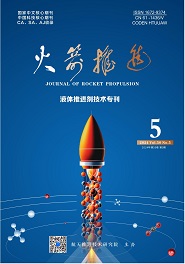航天推进技术研究院主办
TIAN Li-cheng,WANG Xiao-yong,ZHANG Tian-ping.Application and development trend of space electric propulsion technology[J].Journal of Rocket Propulsion,2015,41(03):7-14.
空间电推进应用及技术发展趋势
- Title:
- Application and development trend of space electric propulsion technology
- 分类号:
- V439-34
- 文献标志码:
- A
- 摘要:
- 充分调研分析了国外空间电推进技术及典型应用情况,详细介绍了电推进在GEO卫星位置保持和轨道转移、深空探测主推进、中低轨道航天器无拖曳控制与高精度姿态控制、空间太阳能电站轨道维持等领域的空间应用情况。对电推进在国内不同领域的应用需求进行了分析,包括GEO卫星位置保持和全电推进、近地小行星探测等深空探测主推进、低轨航天器无拖曳控制和轨道维持、(超)低轨小卫星编队飞行及(微)小卫星精确轨道控制和空间太阳能电站轨道维持等任务。电推进技术正朝着高功率、大推力、低功率、微小推力、宽功率范围推力连续可调、高比冲、长寿命和多模式方向发展。针对电推进在不同应用领域的需求及电推进技术发展方向,提出了我国未来20年拟开展的电推进技术研究项目。
- Abstract:
- The space electric propulsion technology and its typical application at abroad are analyzed in this paper. The applications of the electric propulsion technology in the fields of GEO satellite position keeping and orbit transfer, propulsion of deep space exploration, low-medium orbit spacecraft drag-free control and high precision attitude control, and track maintain of space solar power station are introduced in detail. The application demands of electric propulsion technology in different fields in China are analyzed, including GEO satellite position keeping and full electric propulsion, main propulsion of near-earth asteroid exploration, low-orbit spacecraft drag-free control and orbit maintain, ultra-low orbit small satellite formation flying and micro/small satellite precise orbit control, space requirements of the electric propulsion in the different fields and development direction of the electric propulsion technology, the research projects of electric propulsion technology in China in the next 20 years are put forward.
参考文献/References:
[1]张郁. 电推进技术的研究应用现状及其发展趋势[J]. 火箭推进, 2005, 31(2): 27-36.
ZHANG Yu. Current status and trend of electric propulsion technology development and application[J]. Journal of Rocket Propulsion, 2005, 31(2): 27-36.
[2]KOZUBSKI K N, MURASHKO V M, RYLOV Y P, et al. Stationary plasma thrusters operate in space[J]. Plasma Physics Reports, 2003, 29(3): 251-266.
[3]ANZEL B. Stationkeeping the Hughes HS 702 satellite with a xenon ion propulsion system[C]// Proceedings of the 49th International Astronautical Congress. Melbourne, Australia: IAF, 1998:105-110.
[4]OCAMPO C A. Geostationary orbit transfer using electric propulsion for the Hughes HS-702 satellite[C]// Procee- dings of the 49th International Astronautical Congress. Melbourne, Australia: IAF, 1998: 209-216.
[5]KING L B, GALLIMORE A D, MARRESE C M. Transport-property measurements in the plume of an SPT-100 Hall thruster[J]. Journal of Propulsion and Power, 1998, 14(3): 327-335.
[6]张天平, 张雪儿. 空间电推进技术及应用新进展[J]. 真空与低温, 2013, 19(4): 187-194.
[7]RAWLIN V K, SOVEY J S, HAMLEY J A, et al. An ion propulsion system for NASA's deep space missions, AIAA 1999-4612[R]. USA: AIAA, 1999.
[8]SENGUPTA A, ANDERSON J R, BROPHY J R, et al. Performance characteristics of the Deep Space 1 flight spare ion thruster long duration test after 21,300 hours of operation, AIAA 2002-3959[R]. USA: AIAA, 2002.
[9]SENGUPTA A, BROPHY J R, GOODFELLOW K D. Status of the extended life test of the Deep Space 1 flight spare ion engine after 30 352 hours of operation[M]. USA: NASA, 2003.
[10]BROPHY J R, MARCUCCI M G, GANAPATHI G B, et al. The ion propulsion system for Dawn, AIAA 2003- 4542 [R]. USA: AIAA, 2003.
[11]GARNER C E, RAYMAN M D, BROPHY J R. In-flight operation of the Dawn ion propulsion system through start of the Vesta cruise phase, AIAA 2009-5091[R]. USA: AIAA, 2009.
[12]KUNINAKA H, NISHIYAMA K, SHIMIZU Y, et al. Flight status of cathode-less microwave discharge ion engines onboard Hayabusa asteroid explorer, AIAA 2004-3438[R]. USA: AIAA, 2004.
[13]KUNINAKA H, SHIMIZU Y, YAMADA T, et al. Flight report during two years on HAYABUSA explorer propelled by microwave discharge ion engines, AIAA 2005-3673[R]. USA: AIAA, 2005.
[14]KUNINAKA H, NISHIYAMA K, FUNAKI I, et al. Asteroid rendezvous of HAYABUSA explorer using mic- rowave discharge ion engines, IEPC-2005-10[R]. Florence, Italy: IEPC, 2005.
[15]KUNINAKA H, NISHIYAMA K, SHIMIZU Y, et al. Re-ignition of microwave discharge ion engines on Hayabusa for homeward journey, IEPC-2007-9[R]. Florence, Italy: IEPC, 2007.
[16]DRINKWATER M R, FLOBERGHAGEN R, HAAGMANS R, et al. GOCE: ESA's first earth explorer core mission[M]// BEUTLER G B, DRINKWATER M R, RUMMEL R, et al. Earth gravity field from space-From sensors to earth sciences. Dordrecht, Netherlands: Kluwer Academic Publishers, 2003: 419-432.
[17]ZAKRZWSKI C, BENSON S, SANNEMAN P, et al. On-orbit testing of the EO-1 pulsed plasma thruster [EB/OL]. [2003-02-19]. http://ntrs.nasa.gov/archive/nasa/ casi.ntrs.nasa.gov/20030025690.pdf.
[18]DOMONKOS M T, FOSTER J E, SOULAS G C, et al. Testing and analysis of NEXT ion engine discharge ca- thode assembly wear, AIAA2003-4364[R]. USA: AIAA, 2003.
[19]BENSON S W, PATTERSON M J, SNYDER S. NEXT ion propulsion system progress towards technology readiness, AIAA2008-5282[R]. USA: AIAA, 2008.
[20]TANG R, GALLIMORE A D, KAMMASH T. Design of an ECR gas dynamic mirror thruster, IEPC-2009-210 [R]. Michigan, USA: IEPC, 2009.
备注/Memo
收稿日期:2014-12-18;修回日期:2015-01-11 基金项目:重点试验室基金(9140C5504041001) 作者简介:田立成(1983—),男,高级工程师,研究领域为离子和霍尔电推进等空间特种推进理论与实验技术
